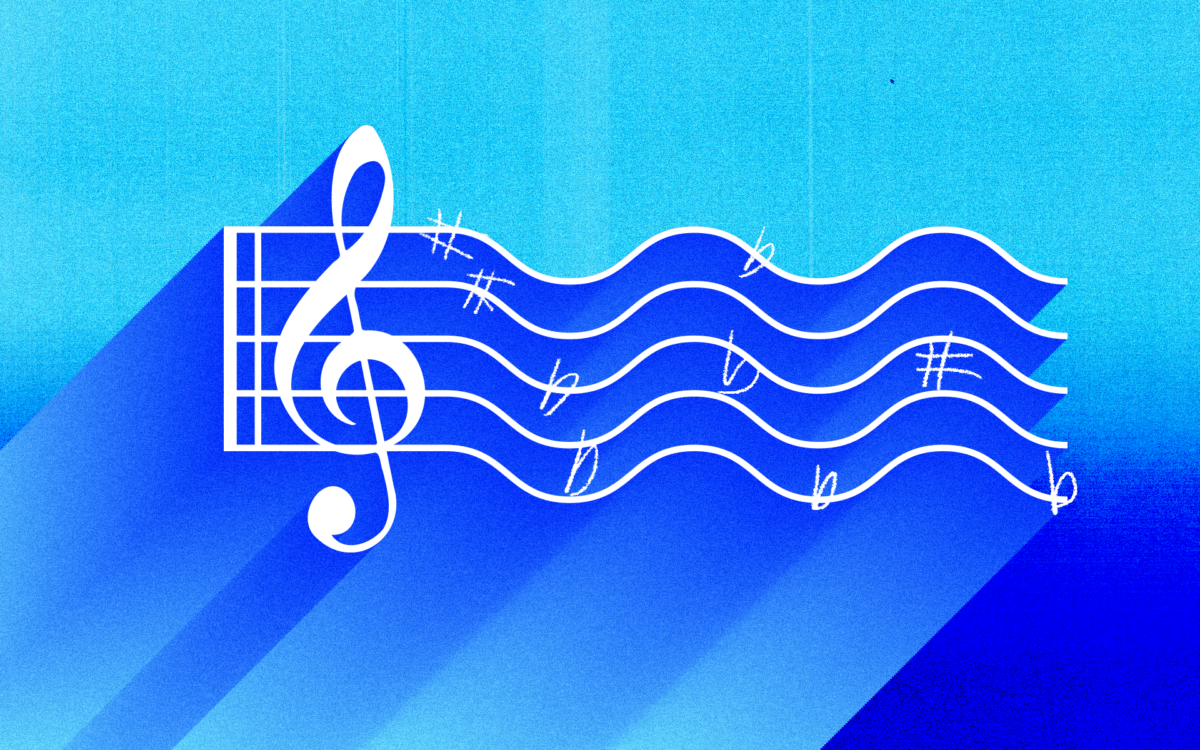Like many sonic phenomena and songwriting flips of the script, key changes are recognizable by every music listener.
The shift of mood provided by changing the entire map by which a song is navigated through is enough to perk up any pair of ears, trained musician or not.
Knowing its name, and how it works, however, is not as common. Yet, it’s an aspect of songwriting incredibly common throughout popular music’s history, and not only the ballads like Whitney Houston’s famous cover of “I Will Always Love You.”
Today, we’ll look into what a key change is, what a key change isn’t, and how to use this tool to completely transform the emotional impact and energy of your songs. At the end, we’ll also give you a quick look at how to set up key changes inside a digital audio workstation (DAW), using Avid Pro Tools as an example.
What is a key change and how does it work?
A key change is when a piece of music changes its tonal center within the circle of fifths. Almost all songs hold a melodic home base, a tonic note, and a core set of notes which (Western European) music theory will tell you are technically “in” or “out of” the song’s key.
A key change is notably not simply using a single note that’s out of key, which we might refer to as an accidental. It’s also not playing a single chord that’s out of key, which we might call a borrowed chord or a secondary dominant depending on the context. Rather, we’re talking about changing the entire set of rules!
In simple terms, when the “home base” note or chord of the song changes, everything else follows it.
How key changes are implemented
Key changes can be subtle or bold, but in both cases they work by resetting the listener’s sense of home and expectations of what’s coming down the road. In some ways, a key change is risking the trust of the listener on their journey, so being intentional with how the change comes about is crucial to keep them hooked and engaged.
We’ll get into the song examples below, but in terms of the theory of key changes, there are several common ways to pull it off:
- Parallel key: This is the basic approach of switching between major and minor with the same tonic (B♭ major to B♭ minor).
- Relative key: This takes advantage of the major and minor scales which share all of the same notes, not just the tonic. Some examples are B♭ Major to G minor, G major to E minor, and E major to C♯ minor. If you’re familiar with the circle of fifths, you might have all of these relative majors and minors memorized!
- Direct / abrupt: This just jumps to the new key without a transition—if you can make it sound interesting to the listener, a melodic middle ground between your two keys need not be found.
- Chromatic: This shifts the key by moving one or more notes chromatically. This is often done by moving either a half step upwards or downwards, sometimes multiple times consecutively.
- Interval: When you want more than a chromatic half or whole step, jump an entire interval! A key change up by a minor third is the most common, but songs like “We Are The Champions” jump an entire fourth from each verse to the chorus!
One more bonus idea would be pivot chords. Those with a knack for music theory and memorizing keys will love this one. This achieves a very smooth, natural key change by utilizing a chord that exists in both the original key and the new key. For example, in moving from B♭ major to F major, the chords G minor or D minor can serve as a pivot.
The impact of key changes on song emotion
Key changes are a powerful tool because they can instantly change how the listener feels. EDM producers in particular will hold an incredible focus on their use of tension and release, buildup and letting loose, and suspense and relief. But, this is no pre-chorus or bridge (although a key change can be part of these)—this is changing the entire tonal center of a song.
How key changes can alter a song’s mood
- Raising intensity: An upward key change (say, from C to D major) often injects excitement and energy, making the song feel like it’s taking off to explore new heights. This is the idea behind the many power ballads that use an upward key change before the final chorus.
- Lowering intensity: Moving to a lower key or from major to minor can bring the mood down, making the music feel more somber, reflective, or intimate. In all forms of moods, a dreamscape can be painted for the listener.
- Lyrical shift of tone: Some associate different emotional feels with different keys. Those differences in emotion can accompany a change in lyrical content—for example, moving from uncertainty to triumph, or from tension to resolution.
Famous examples of key changes in music
It’s important to start here by addressing the downward trend of key changes in popular music. At least in terms of the Billboard Top 100, 25% of such songs between the ’60s – ’90s included a key change, but between 2010 – 2020, Travis Scott’s “SICKO MODE” was the lone #1 hit with a key change.
This doesn’t necessarily mean all musicians are using key changes less, but the pop machine seems to have left it behind as creators’ and listeners’ tastes have shifted.
We already mentioned “I Will Always Love You,” which uses the common approach of raising the key by a half step at the end of the song to act as a dramatic conclusion. It’s somewhat like the infamous Spinal Tap scene, but for vocal range and band synchronicity.
Michael Jackson’s “Man in the Mirror” does the same, whereas Bon Jovi’s “Livin’ On A Prayer” jumps an entire minor third. In terms of impressing your audience with vocal chops, this is one of the most effective ways to do so.
A number of tracks move into a new key in the middle of a song, and rather than acting as an exclamation point, here it can act as a propulsion into an alternate reality or dreamscape, as The Beatles famously do in “Penny Lane.” Even cooler is how this song actually returns to the original key, leaning further into that feeling of a dream by giving you a moment of waking up again to the original tonal qualities.
The list of classics goes on, but what about more modern examples? Here are a few from the 2000s, when nearly no songs with a key change hit the top of the charts:
- Lizzo’s “2 Be Loved (Am I Ready)”: This song uses the go-to key change method, moving up in key for the final chorus and post-chorus outro.
- Beyoncé’s “Love on Top”: This song is famous for multiple consecutive upward key changes, with each chorus building upon the last one (and prompting a costume change for each in the music video).
- Lady Gaga’s “Perfect Illusion”: In honor of Gaga’s incredible new album, here’s an ode to the MAYHEM phase, with yet another ascending chorus.
These examples show how, in a world with infinite streams of new music accessible to anyone with an internet connection, one shift in key can elevate a song from solid to groundbreaking. But how can modern musicians pull it off? Do the above songs excite you, or sound unoriginal or too like the hundreds of top tracks which did this in the late 1900s?
Like any component of music, it’s yours to use as you will, including training your ear! For more of that, simply flip through the collections of rock classics from Queen and The Beatles and see what you find.
Modulation vs. key change: Key differences explained
The terms “modulation” and “key change” are often used interchangeably, but they aren’t exactly the same thing. We can look at modulation as the process and a key change is one specific, often dramatic, result.
Most of what we explored above represented a clear, permanent shift in the tonal center, or a key change. Beyoncé then pushed that boundary by continuing to raise the tonal center again and again, and then there’s what Queen did. What exactly do we call that?
In this lies our distinction of key changes and modulation. We might technically refer to “We Are The Champions” as a track which shows mastery of modulation, because the song switches back and forth between the two keys, but doesn’t have the permanence of key changes.
Setting up key changes in your DAW
For songwriters and producers, experimenting with key changes is easier than ever thanks to digital audio workstations (DAWs). We now have the ability to mark where key changes will take place, affecting how our MIDI is visualized, how our hardware instruments work, and how our software follows.
In Avid Pro Tools, for example, a popular DAW that’s now integrated with Splice, you can do this with the key ruler. Here’s how to get set up:
- In the Edit window, go to View → Rulers → Key. This will display the key signature ruler above your tracks.
- You can then insert a Key Signature as a global setting, or tell Pro Tools at what bar or beat it will change. For the latter, select the spot you want to change it and go to Event → Event Operations → Key, or simply double-click that spot in the Key Ruler.
- Enter the new key signature for the selected bar / beat.
- Make sure to test everything out so you know how your tracks will respond to the change.
Similar to the tempo change, this is especially useful if you’re scoring for film or arranging orchestral parts—but it’s also a fun, useful skill for all producers to learn.
Next time you’re writing or producing, don’t be afraid to try key changes out, for they could just be what unlocks your signature sound.
Explore Splice INSTRUMENT, our virtual instrument plugin that puts an ever-growing catalog of free and premium sounds at your fingertips:
October 7, 2025

.svg)
.svg)




